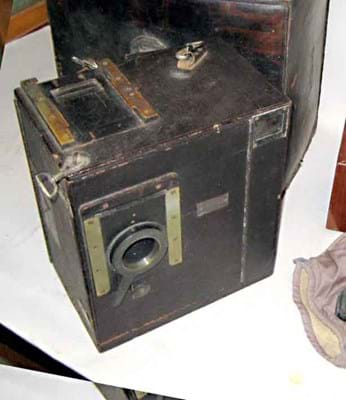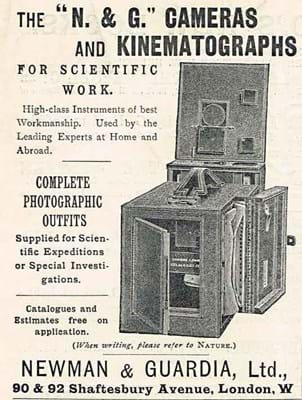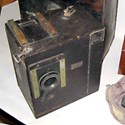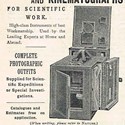It was in early 1896 that Arthur S. Newman (1861-1943), perhaps the most innovative British camera maker of the early 20th century, first saw the Lumière Cinématographe in action at a theatre in Covent Garden.
He had been designing still cameras since the mid 1880s and, together with a London businessman and keen photographer named Julio Guardia, had established a reputation for high-quality products. But moving pictures were clearly the future.
Within the year he had filed a series of patents for a projector of perforated 35mm film he called the Newman & Guardia Kinematograph. Production began at 90 and 92 Shaftesbury Avenue towards the end of 1897.
It was advertised for sale in three different versions between 1899 and 1903. Among the first customers was the British magazine publisher Sir George Newnes (1851-1910), who bought one for use on the first British venture of the heroic age of Antarctic exploration, the Southern Cross Expedition of 1899-1900.
Today these instruments, fashioned with brass chain-driven movements and leather-clad cases of tropical hardwood, are extremely rare.
There is no doubt that the internet has helped transform the marketplace for early technology. Not just a huge information resource just waiting to be Googled, the net has brought together like-minded enthusiasts and matched sellers of the quirky and the obscure with buyers of the same.
Gramophone
A rare gramophone by EMG was a recent valuation day discovery for Richard Winterton (21% buyer's premium) of Lichfield.
Like Arthur S. Newman, Ellis Michael Ginn (whose initials gave the firm its name in 1923) specialised in hand-built, sometimes bespoke, instruments for a demanding top-end clientele.
The firm went into voluntary liquidation in 1980, having produced and sold around 1500 of the finest acoustical gramophones ever made. In the 1930s in particular, EMG were at the forefront of two new hi-fi technologies: the sometimes controversial use of electricity to power the turntable and the relatively new science of acoustics that saw gramophone horns grow bigger and bigger in pursuit of more and better quality sound.
It was doubtless thanks to experiments such as R.P.G. Denman's 27ft (8m) long exponential horn loudspeaker - a benchmark in audio quality in 1929 recently recreated at the Science Museum - that the papier-mâché speaker to this EMG 'table top' model measures a massive 2ft (60cm) across. It was believed by the vendor, in whose family it had been for many years, to have been used for public performances.
On May 28, four serious collectors bidding on the phone saw it sell way over expectations at £2700.
When Christie's South Kensington sold a working example in November 2000 for £9000 it was described as the only known example in private hands with only one other in the collection of the National Museum of Photography, Film and Television in Bradford.
So doubtless there were a few deep intakes of breath when camera aficionados happened upon mention of 'a Newman and Guardia Ltd cine camera with mahogany cased reel boxes and loose lenses etc, housed in a leather case' at the sale held by Lawrences (18% buyer's premium) of Bletchingley, Surrey on April 29-May 1.
Although the cataloguing was brief, and no estimate given, a revealing digital image of a third surviving Kinematograph and its accessories was published online. Doubtless Arthur S. Newman would have approved.
Lawrences received a number of enquiries for additional images but were more than surprised to see it sell at £7800.









